Marking the memories of a million service personnel
 Mike St Maur Sheil / Western Front Photography
Mike St Maur Sheil / Western Front PhotographyThe act of Remembrance takes place every day of the year for the Commonwealth War Graves Commission.
It works to maintain more than one million headstones and memorials in 154 countries around the world to mark those who died in World War One and World War Two.
Tyne Cot cemetery near the town of Ypres in Belgium is where almost 12,000 soldiers who fought in World War One are buried.
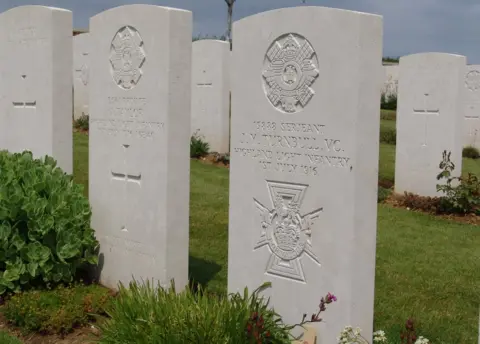 CWGC
CWGC"We are probably the world's largest gardener," Peter Francis from the Commission says, with staff mowing the equivalent of 1,000 football pitches every week.
The headstones are the same size surrounded by uniform lawns and flowers.
The Commission says everyone who died is treated equally, adding it "doesn't matter whether you were killed in battle and awarded a Victoria Cross or whether you died from influenza".
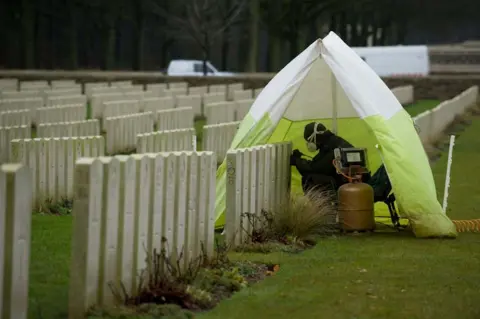 CWGC
CWGCThe Commission employs 13,000 staff around the world - many of them locals. Four generations of the Jaradah family have been tending the Gaza cemetery that dates from WW1.
"I'm a son of the cemetery," Ibrahim, the youngest member of the family, says. "I've grown up with these men."
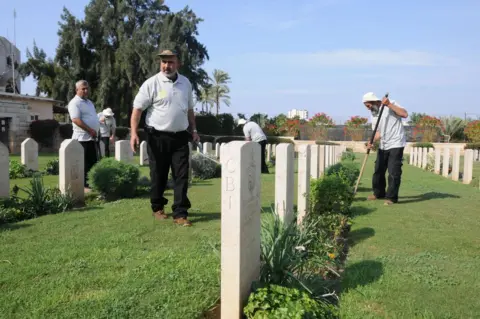 CWGC
CWGCMeanwhile it's a husband and wife team, Shadrack Paull and Lusia Axalte, that look after the cemetery at Morogoro in Tanzania.
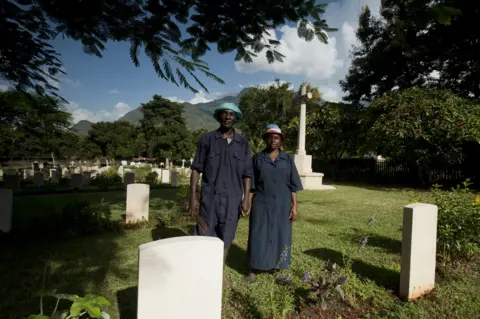 CWGC
CWGCBen More Assynt in north-west Scotland is the most remote war grave in the UK. In April 1941 an RAF Anson bomber crashed on the mountain killing all six crew on board.
The grave was originally marked with a cairn, a man-made stack of stones, which deteriorated over time. In 2012 they flew in a new granite marker by RAF helicopter to replace the original stones.
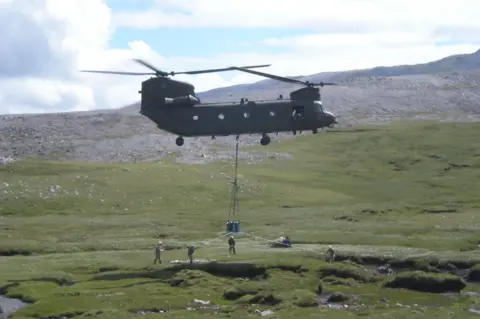 CWGC
CWGCContinuing conflict can make the job of maintaining war graves more difficult.
However, the Commission has recently managed to restore hundreds of graves at Habbaniya war cemetery, west of Baghdad in Iraq.
There are 54,000 war dead remembered in Iraq alone.
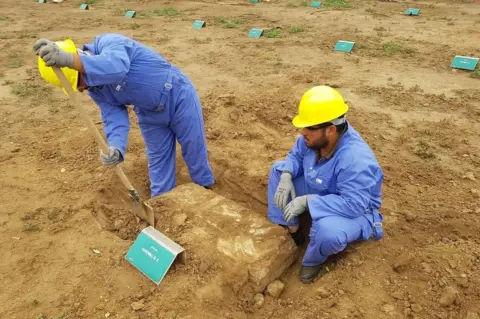 CWGC
CWGCWar-torn Yemen is another challenging location. The CWGC was recently informed of vandalism at the Maala cemetery in the south of the country.
It says it has already made replacement grave markers, but is waiting for safe access to the site to carry out repairs.
 CWGC
CWGCEncroachment is another problem. In Nairobi farmers have been using the Kariokor cemetery to dry cow hides for sale.
The CWGC says it is working with local authorities to find a long-term solution.
 CWGC
CWGCThough each cemetery has familiar themes with gardens and flowers, no two sites are exactly the same.
Portland stone is often used for the headstones at the large cemeteries in Belgium and France while in Scotland granite is often used.
In Turkey the graves are marked with plinths rather than headstones because of the harsher climate.
 CWGC
CWGC"Remembrance is still a living, breathing process," says the CWGC.
It recently completed a memorial in Abuja, Nigeria, commemorating more than 2,000 Nigerian nationals who lost their lives serving with Commonwealth forces.
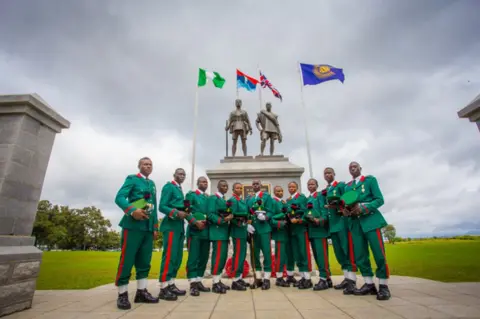 CWGC
CWGCAll pictures copyright of the Commonwealth War Graves Commission.
